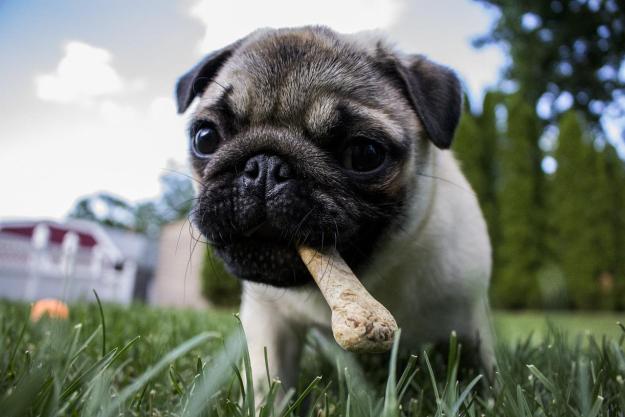Some people crave “summer vibes” year-round and others long for the crisp air of a winter morning. Whether you’re a fan of summer or a die-hard winter enthusiast, seeing a happy dog in snow-covered parks, backyards, and sidewalks can make you feel like a kid again.
That being said, you’ll want to take extra precautions with your dog in winter weather. Here’s everything you need to know about spending time with your dog in cold conditions, so you can ensure they stay safe and cozy warm throughout the winter.
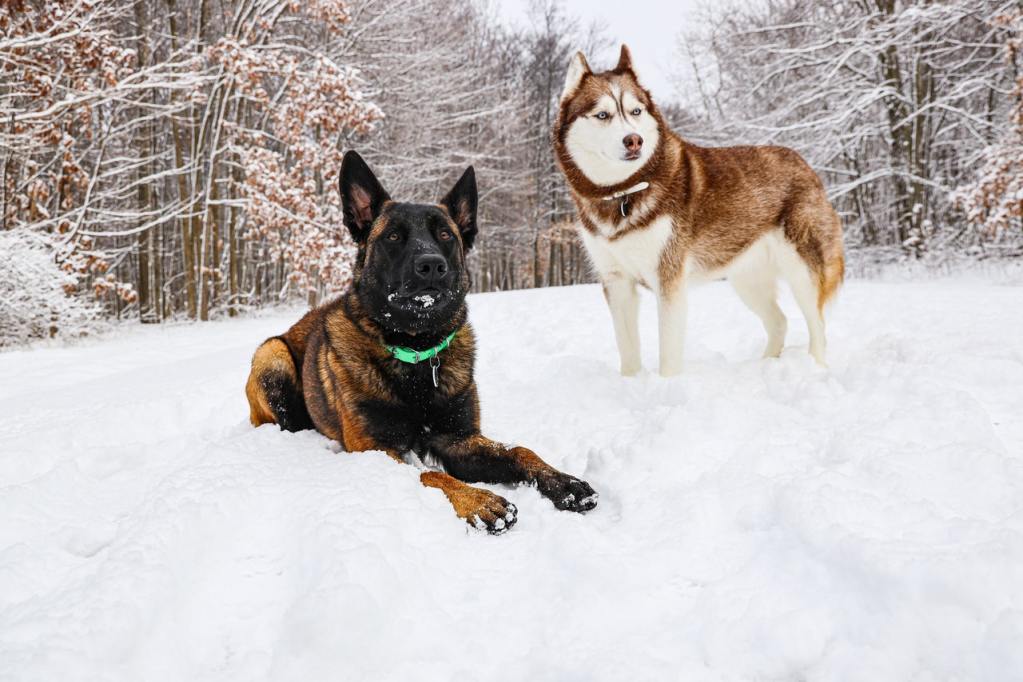
Can I leave my dog in the snow?
Depending on your dog’s breed, you should limit their time outside in the snow. It’s safe for northern breeds like Siberian huskies to remain outside for longer stretches of time than most breeds. But a small, short-coated breed like a Chihuahua needs a good winter coat and boots if they are going to spend time playing outside.
Generally speaking, it’s safe for most dogs to spend around 10-15 minutes outside without getting too cold, provided the temperature isn’t substantially below freezing. You should never leave your dog unattended in the snow for long periods of time, as they may develop frostbite or hypothermia.
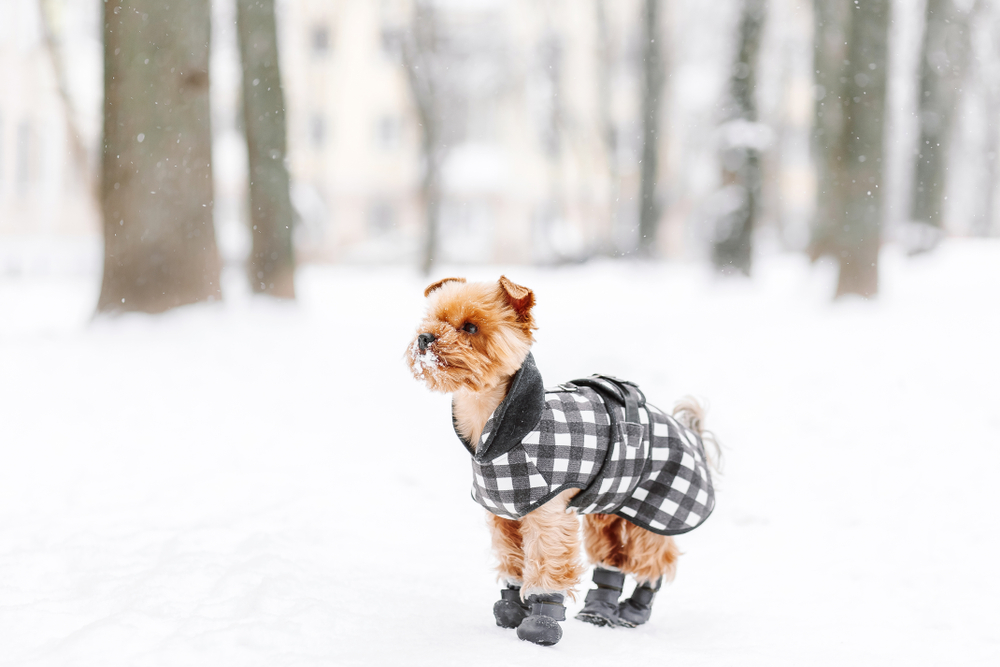
Can dogs hurt their paws in the snow?
Just like we suffer from dry, chapped lips and hands during the winter months, our dogs are affected by the cold weather too. Their paws are especially susceptible to the cold because they come into direct contact with snow and ice. Snow and bits of ice can become packed between their toes, causing discomfort and increasing their chances of developing frostbite.
But snow and ice aren’t the only winter woes that should concern you. Chemical deicing agents and salt can cause chemical burns, and they’re toxic if ingested. We recommend getting your pooch a high-quality pair of winter boots to protect their paws. Remove their boots and clean them immediately once you’re inside to prevent your pup from licking them.
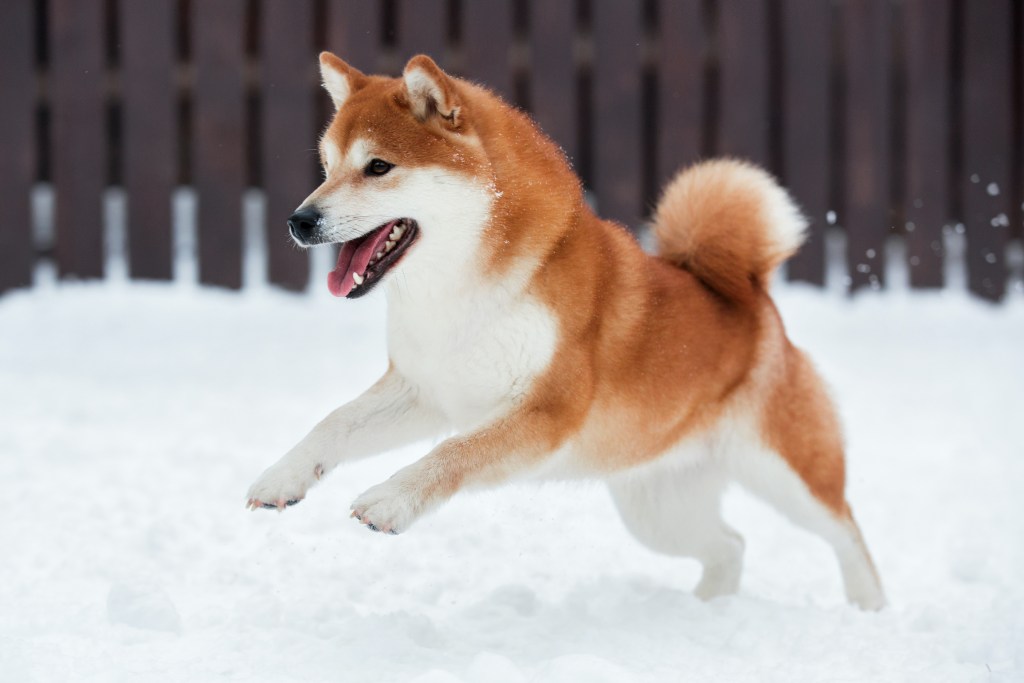
Keeping your dog safe in the snow
Your fur baby’s safety is your primary concern, and keeping dogs safe in snowy and cold conditions can be a little tricky. Here are a few tips to help you along the way.
Limit walk time based on your dog’s breed
While breeds with thick, heavy coats can accompany you on a 30-minute walk in the snow, not all breeds can withstand the cold. It can take a dog 10 days to get used to new temperatures, so monitor your dog and adjust walk times as needed. If you’re concerned about exercise, consider adding in some extra indoor play sessions, like playing fetch down a hallway.
Dress your dog in winter clothes
If it’s too chilly for you to go outside without a coat, it’s likely too cold for your dog, too. Dress your pup warmly in a coat and boots, especially if they are a young puppy or a senior dog. Pups and older dogs have a more difficult time regulating their body temperature. Keep a close eye on your dog while you’re outside. If they begin to shiver, whimper, or show other signs that they want to go home, take them back inside immediately.
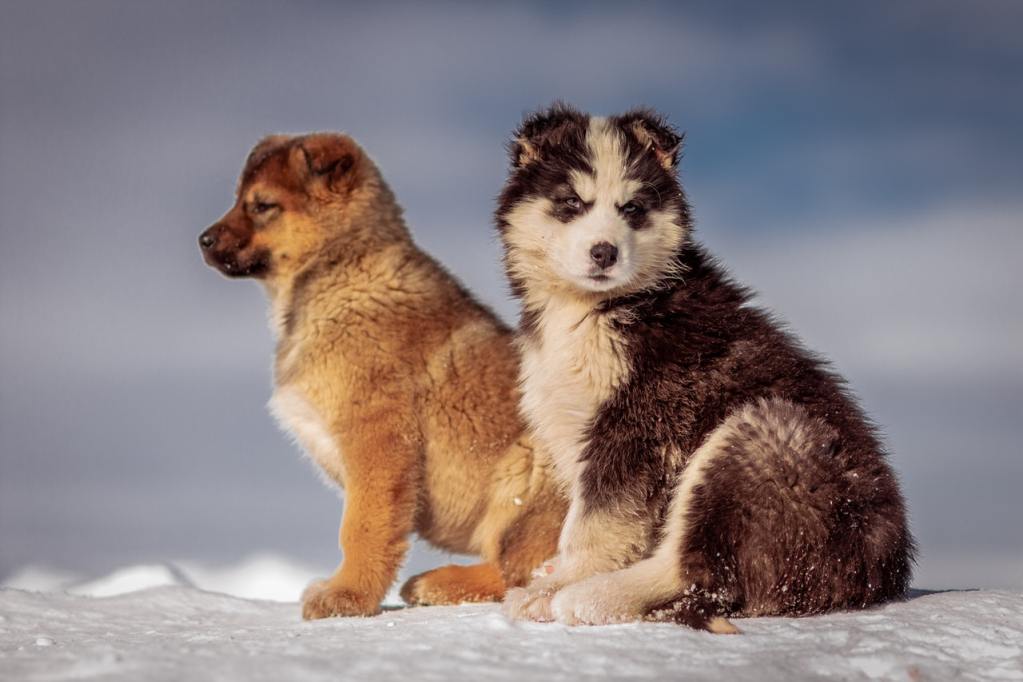
Watch out for chemicals
In addition to salt and deicing agents, you should be mindful of another lethal chemical: antifreeze. Clean the area around your vehicle thoroughly to prevent your pup from ingesting this deadly chemical. You may also want to switch to a propylene glycol-based product instead of ethylene glycol. If you take your dog walking on a busy street, keep them away from other vehicles, and don’t let them investigate any chemical spills in the area.
Increase their calories
Research shows that pups need two to three times the number of calories they usually consume during warmer months to make up for the extra calories they burn to stay warm during fall and winter. Double up on portion size and don’t be afraid to feed your pooch an extra treat or two during the colder months. Talk to your veterinarian about how much you should feed your dog if they’re overweight. Your vet can make the proper recommendations based on your dog’s general health, underlying conditions, and activity level.
Give your dog a heat source
Looking after your pup during the winter continues once you’re inside, too. Make sure your dog is nice and dry after spending time outside, and do your best to keep them warm. While allowing the temperature to drop indoors can save you money on your utility bill, it can make your fur babies uncomfortable. If you notice your dog shivering, add another blanket to their bed. You’ll also want to ensure your pup has access to a warm, clean dog bed. Consider adding a warmer bed, such as one with shearling, or buying a new one if the other is old and worn down.
Keeping your home warm can help prevent arthritis flare-ups, and every member of your family will be much more comfortable in a toasty home. If you live in an older, drafty house, consider using a pet-safe space heater. If cranking up the heat leads to chapped lips and parched skin, you can invest in a humidifier to alleviate winter dryness.
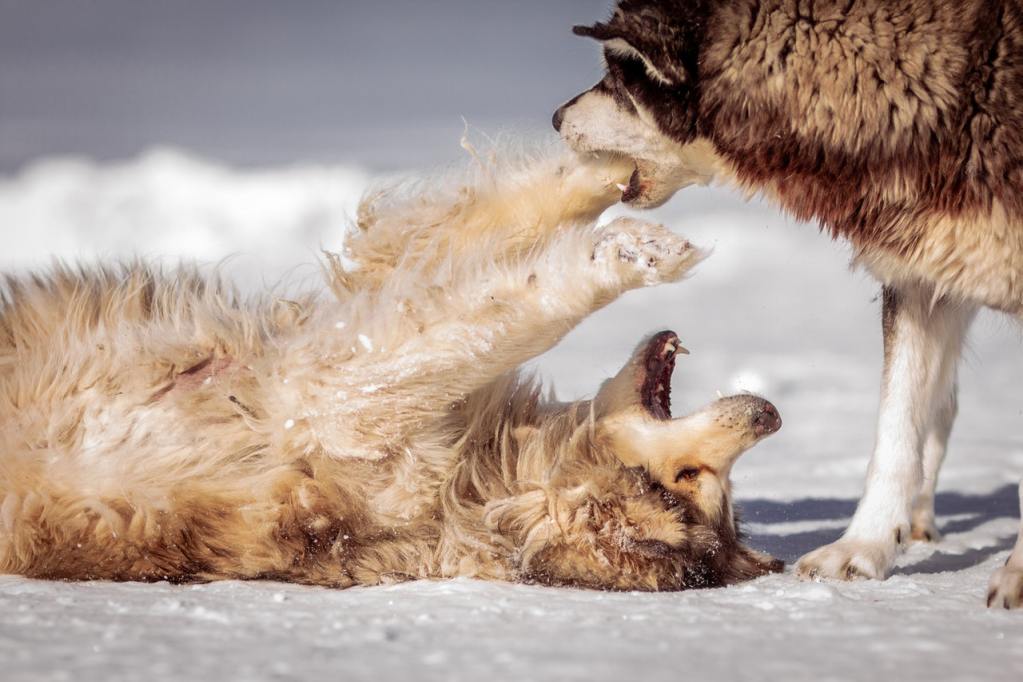
Keeping your pup safe and warm when the temperature dips can seem challenging, but it doesn’t have to be. Can you walk your dog in cold weather? Yes, but you’ll want to limit the time, especially for specific dogs. Don’t let small, very young, or senior dogs spend too long outdoors. Dogs with health problems may also need shorter walks when it’s chilly — your vet is your best resource.
Make sure they have winter-appropriate clothing like a good coat and waterproof dog boots. Keep an eye out for dangerous chemicals. Remember: If it’s too cold outside for you, it’s too cold for your dog. A quick potty trip followed by indoor play and snuggles are best on a cold winter day.
Editors' Recommendations
- 5 surefire ways to keep your dog off your bed and get a good night’s sleep
- Taking your dog’s collar off at night: Safe move or safety risk?
- Looking for signs your dog has ticks? These telltale symptoms mean you have a flea or tick problem
- Do puppies sleep a lot? These are the perfectly normal sleeping habits of a healthy pup
- Where to put a dog crate in your house depends on these important factors



